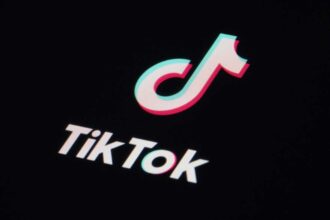Social media platforms evolve at lightning speed, a common question pops up: Do hashtags still work on Facebook, X (formerly Twitter), and all those other social media platforms we use every day?
The short answer, as we navigate 2025, is a resounding YES – but with a crucial caveat: their effectiveness and best practices vary significantly by platform.
Think of them less as a magic wand for instant virality and more as a powerful, nuanced tool that, when used strategically, can dramatically amplify your content’s reach and connect you with your ideal audience.
READ ALSO: Unpacking the Debate: Is a Teen Social Media Ban the Answer for Youth Well-being?
READ ALSO: How to Truly Engage Your Audience on Social Media: A Nigerian Brand Playbook
Ready to demystify the hashtag and master its modern usage? Let’s dive into the specifics for each major platform!
The Enduring Core: Why Hashtags Still Matter
Before we break down platform specifics, let’s revisit the fundamental power of the hashtags:
- Discoverability: They categorize your content, making it searchable for users interested in specific topics.
- Trend Participation: They allow you to join broader conversations and capitalize on trending topics, increasing your visibility.
- Community Building: They help you find and connect with like-minded individuals and niche communities.
- Algorithmic Signals: They provide platforms with crucial context about your content, helping algorithms show it to the right people.
In essence, hashtags are still vital connectors, linking your content to relevant audiences and current discussions.
Platform Deep Dive
Let’s look at how hashtags perform on the major players as of May 2025:
1. Facebook? (The Nuanced Yes)
- Verdict: Yes, but their role is more subtle and less about widespread organic discoverability compared to other platforms.
- How They Work: On Facebook, hashtags are most effective within:
- Groups: Highly engaged niche communities where members actively search for specific topics.
- Trending Topics: For broader, public discussions, using a trending hashtag can tie your post into a larger conversation.
- Personal Branding: Helps categorize your own content for those who actively follow you.
- Best Practice: Don’t overstuff. Use 1-3 highly relevant, specific hashtags per post. Think about what people might actually search for in a group related to your content, or a broad event. Avoid generic, overly popular tags unless directly related to a trending topic.
2. X (formerly Twitter): (The Foundational Yes)
- Verdict: Absolutely! Hashtags are an integral part of the X experience.
- How They Work: X thrives on real-time conversations and trends. Hashtags are the backbone of:
- Trending Topics: Allowing users to see what’s happening right now.
- Live Events: Connecting discussions during conferences, TV shows, or news events.
- Search: Users actively search for hashtags to find content and engage in specific discussions.
- Best Practice: Focus on 1-2 trending or highly relevant hashtags per tweet. Keep it concise. Over-tagging can look spammy and reduce impact. They should integrate naturally into your tweet, not just be tacked on.
3. Instagram: (The Essential Yes)
- Verdict: Critical for discoverability, especially for organic reach!
- How They Work: Instagram uses hashtags extensively to:
- Populate the Explore Page: Getting your content seen by users who don’t follow you but are interested in your topics.
- Enhance Reels Discoverability: Essential for viral potential.
- Improve Search Results: Users can search directly for hashtags to find content, accounts, and Reels.
- Best Practice: You can use more here! A mix of 5-10+ hashtags is often effective, combining:
- Broad/Popular: (e.g., #fashion, #travel)
- Niche-Specific: (e.g., #sustainablefashion, #ecotravel)
- Medium-Volume: (e.g., #lagosfashionblogger, #africanadventures)
- Branded/Community-Specific: (e.g., #yourbrandname, #yourcommunitytag)
- While you can use up to 30, quality and relevance still trump quantity. Place them in the caption or the first comment.
4. TikTok: (The Crucial Yes)
- Verdict: Absolutely vital for feeding content to the “For You Page” (FYP) algorithm.
- How They Work: TikTok’s algorithm heavily relies on hashtags to categorize your video content and show it to users who are likely to engage with it. Trending sounds are often tied to trending hashtags.
- Best Practice: A mix of 3-5 highly relevant hashtags is usually optimal. Include:
- Trending Hashtags: If relevant to your content.
- Niche-Specific Hashtags: (e.g., #beautytipsnigeria, #nigeriancomedy)
- Content-Specific Hashtags: (e.g., #DIYcrafts, #travelvlog)
- Commonly used ones like #fyp or #foryou can help, but relevant niche tags are often more powerful for reaching your target audience.
5. LinkedIn: (The Professional Yes)
- Verdict: Yes, for professional networking, content categorization, and thought leadership.
- How They Work: LinkedIn users can “follow” hashtags to see relevant posts in their feed. It’s about joining professional conversations and improving the discoverability of your professional insights.
- Best Practice: Use 3-5 relevant, professional hashtags per post. Focus on industry terms, skill sets, and professional topics (e.g., #digitalmarketing, #careerdevelopment, #nigeriabusiness).
Best Practices for All Platforms in 2025:
To truly propel your social media strategy with tags, keep these universal tips in mind:
- Relevance is KING: Never use a tag just because it’s popular if it’s not genuinely related to your content. Irrelevant tags can hurt your reach and engagement.
- Research, Research, Research: Use platform analytics, social listening tools, or even the built-in search functions to discover what tags your audience uses and what’s trending in your niche.
- Mix it Up: Combine broad appeal, niche specificity, and branded tags to maximize your reach.
- Don’t Overstuff: While Instagram allows many, generally, fewer high-quality, relevant tags are better than a long list of random ones.
- Monitor Performance: Pay attention to your analytics! Which are driving the most impressions, reach, and engagement for your content? Adjust your strategy based on data.
- Capitalize First Letter for Readability:
#LikeThisExampleis much easier to read than#likethisexample. - Integrate Naturally: If possible, weave relevant naturally into your captions or posts rather than just listing them at the end.






